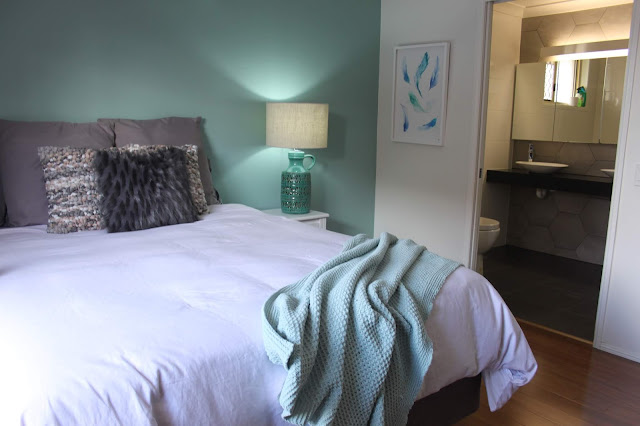Your home is not a hospital
Originally posted as "Your home is not a hospital" on 18 June 2017
Instagram: @cross_family_adventures
YouTube: https://www.youtube.com/channel/UCubAYOW3RhSK2jpgmPx5ocg
Blogger: https://crossfamilyadventures.blogspot.com/
 |
| We've tried making our bedroom both accessible and beautiful |
Hospitals. For some, they represent a place of healing. A
place full of caring, well-meaning medical support staff that nurture you until
you return to perfect health and walk out feeling 100%. For others, they represent a
place of extreme misery, pain and, ultimately, death.
Having spent a 7-month stint in the Spinal Unit at the P.A.
Hospital in Brisbane, for me, hospitals represent something in between.
On 11 August 2001, I went into hospital having suffered a
devastating spinal cord injury. On my third night in, when my diaphragm decided
it had had enough of this whole breathing thing, I took (what I thought at the
time to be) my last breath. I then passed out on account of sheer exhaustion
and lack of oxygen and left my fate in the hands of the medical staff. There
was absolutely nothing more that I could physically do. It was a terrifying
moment. One that I will never forget… ever.
 |
That memory though won’t just be about how I felt at that
moment, the image of my surroundings at that moment is also etched into my mind
– from the sterile white walls and glaring white fluorescent lights, right down
to the starchy while sheets on the height-adjustable bed with bedrails raised.
I was in a hospital – the exact place I needed to be at that
moment in my life.
Seven months later though, I was home. I still required the
use of my “freedom machine” (my wheelchair) but I certainly didn’t need the
sterility of the hospital. Nor did I need the breathing apparatus, the white
walls, bright lights, uncomfortable bed or the starched sheets.
I needed a home.
 |
| The Cross family (pre-Dawson) in front of our current home, prior to its extensive renovations |
I’ve lived in 5 different homes in my 16 years of living
with a spinal cord injury. Each one of them have had to be renovated, some
extensively, to meet my access requirements. Though thankfully – purposefully –
not one of them have reminded me of a hospital.
We’ve built extensions, decks and ramps. We’ve renovated
bathrooms, moved walls, swapped carpet for polished floorboards, turned windows
into doorways, and transformed inaccessible back yards in
beautifully-accessible outdoor living spaces. All in order to create an
accessible home environment, tailored to my specific needs.
 |
| Before |
 |
None of these “accessible” features however have detracted
from the feel of the home. Not one of them have made my home feel like a
hospital. In fact, if anything, they’ve added value to the home. All of our
(owned) homes have been sold to able-bodied couples/families, none of whom
suspected that the homes were “accessible” homes.
By no means do I want to detract from people who’ve made an
effort to create accessible homes for themselves or their loved ones but, what
I don’t understand is; why, so often, are these renovations/modifications so
hospital-like? So sterile? So ugly?
 |
I actually already know the answer. It happens for very
understandable reasons. I speak from first-hand experience when I say, any
person who acquires a permanent disability has their entire life turned upside
down, inside out and shaken around a bit (just in case things weren’t messed up
enough). Then, when it comes time for discharge from hospital, they’re expected
to make decisions about their home and how they’re going to live an often
completely different life to the one they had lead pre-injury/accident/illness.
Decisions that don’t seem important at the time, but in 1 year, 2 years, maybe
10 years down the track, when they’re looking to move on, move up or move out,
become decisions that could come back to haunt them.
Again, it’s completely understandable: Because it’s all so
new, because it’s all so rushed, and because it’s all so crazy at that point in
their lives, they turn to anyone and everyone who’s willing to share some
advice – the doctor, occupational therapist, physiotherapist, nurse, gardener,
next door neighbour and/or ‘Cousin Betty’ who had an uncle with a busted leg
one time and needed a ramp at his front door. Often these solutions/suggestions
are clinically-driven. The doctors, nurses and occupational therapists come
from a clinical background. They operate within the hospital environment
confined by strict policies and processes relating to clinical practice,
Workplace Health and Safety, and sterility.
These discussions therefore aren’t based around;
- “How beautiful can we make that bathroom?”
- "How inconspicuous we can make that ramp?”
- “How homely can we make this home?
- "What if we tried this..."
Not at all!
They’re thinking functionality and clinical application,
influenced by the hospital environment that they’re so accustomed to operating
within.
And while all this is going on, the person at the centre of
it all is thinking; “Holy sh!t, I’m outside the confines of the hospital, on my
own, with a disability!”
At that point, it’s more about survival and functionality
than aesthetics and resale value.
If you’re reading this, you’re already in the right frame of
mind. You’re half-thinking long-term, big-picture but you’re likely to be in a
similar situation to many – looking for options within a very short timeframe.
You or your loved one is relocating – either from the hospital environment to
home or from one home to another. Either way, my advice would be to;
- Take your time (as much as you can, buy time if you have to);
- Engage a professional (if you don’t have the knowledge or experience in dealing with access solutions and/or tradies);
- Be thorough and specific about your needs;
- Dream big, set your bar high, then scale back if budget and/or engineering get in your way; and,
- Think long-term, big picture and how what you do now may affect your possible resale in the future.
Whatever you do, don’t be restricted by what you’ve become
accustomed to in the hospital environment.
After all, your home is not a hospital!
P.S. Ditch your white sheets!
Dane Cross
YouTube: https://www.youtube.com/channel/UCubAYOW3RhSK2jpgmPx5ocg
Blogger: https://crossfamilyadventures.blogspot.com/




Comments
Post a Comment